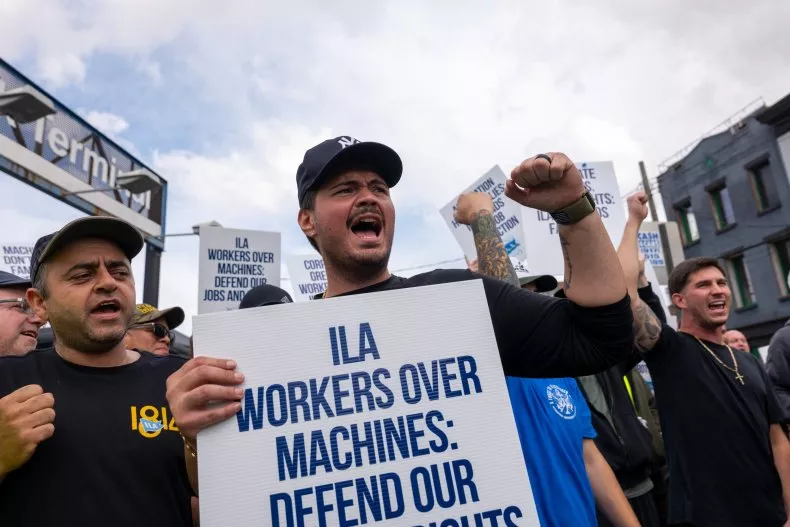Strikes have been making waves across industries, impacting workers, employers, and consumers alike. This guide dives into the latest updates, offering insights into why they’re happening, who’s involved, and what they mean for the future. Whether you’re an employer, employee, or simply keeping up with current events, this article provides clarity on a topic dominating headlines.
What is a Strike?
A strike occurs when workers collectively refuse to work, typically due to disputes over wages, working conditions, or other employment terms. Strikes have long been a tool for employees to press for change and highlight their needs.
Key players in strikes often include:
- Unions representing workers.
- Employers or business leaders seeking to maintain operations.
- Government mediators when resolution requires legal or regulatory intervention.
Types of Strikes
Strikes come in various forms, including:
- General Strikes: Entire industries or regions stop work.
- Sit-in Strikes: Workers stay at their workstations but halt production.
- Wildcat Strikes: Unplanned and not sanctioned by unions.
- Sympathy Strikes: Workers striking in solidarity with others.
Each type of strike is driven by unique motivations, but all share the goal of improving conditions for employees.
The Latest Strike Developments
The landscape for labor disputes is constantly evolving. Here’s a snapshot of the most current strike update affecting major industries worldwide.
1. Strikes in the Technology Sector
The tech industry, known for meteoric growth, isn’t immune to labor unrest. Recent strikes have highlighted undercurrents of dissatisfaction among workers in:
- Gig economy platforms like rideshare and food delivery services.
- Big tech corporations confronting allegations of inequitable pay and lack of union presence.
Impact of These Strikes:
- Delayed project launches and operational slowdowns.
- Increased calls to improve tech-sector labor regulations.
For employer insights on restoring operational efficiency during labor disputes, visit Turbotechify.
2. Healthcare Worker Strikes
Nurses, doctors, and support staff across multiple nations have expressed frustration over:
- Insufficient pay increases amidst inflation.
- Overburdened schedules due to staffing shortages.
Effects on Healthcare Systems:
- Elective surgeries delayed.
- Non-urgent medical cases de-prioritized.
3. Labor Movements in Manufacturing
The manufacturing sector continues to see significant labor action due to:
- Automation threatening job security.
- Concerns over company outsourcing practices.
Example:
United States auto manufacturers reported losing millions during recent strikes that centered around enhanced benefits and production safety concerns.
Quick Fact
Did you know that manufacturing strikes have often led to technological adaptations, as companies seek to minimize future disruptions?
Here’s a comparison of strike impacts across three major industries:
|
Industry |
Key Issues |
Notable Outcomes |
|---|---|---|
|
Technology |
Pay equity, union absence |
Increased union participation |
|
Healthcare |
Staffing, wages |
Improved pay scales post-strike |
|
Manufacturing |
Outsourcing, safety |
Production shifts, automation |
Feel free to explore more industrial disruption solutions at Turbotechify.
Why Strikes Are Happening Now
Several factors have made strikes a frequent occurrence in recent years. Below are some of the driving forces:
Economic Pressures
- Rising inflation rates have shrunk real wages for many workers.
- Economic recovery post-pandemic has created uneven job growth, with some sectors recovering faster than others.
Worker Empowerment
- Employees are using social media to amplify their causes.
- Union membership is climbing as workers push for collective bargaining.
Employer Challenges
- Navigating supply chain disruptions and competition while balancing employee demands has become more complex.
By understanding these dynamics, we can better predict and mitigate the impact of strikes.
Important Note:
When companies fail to address these underlying conditions, it often leads to prolonged labor unrest, which harms both the workforce and the broader economy.
For businesses looking to manage such challenges effectively, click here.
How Strikes Affect Broader Economies
Strikes don’t just impact businesses and workers—they ripple outward, affecting everyone.
Consumer Disruptions
- Product Delays: Consumers may face longer wait times for goods.
- Higher Prices: Companies may pass along costs of disruption to end-users.
Industry Impacts
- Supply Chain Interruptions: A single strike can halt upstream or downstream activities.
- Worker Morale: Industries may see increased turnover if worker concerns are ignored.
National Economic Impacts
Prolonged strikes can hurt GDP growth, particularly when multiple industries are involved. For instance, non-resolution of strikes in logistics or transportation can cripple entire markets reliant on fleet services.
Example:
A two-week dock worker strike in Europe caused an estimated $200 million in economic losses once downstream industries were factored in.
Here’s a quick look at strike-induced economic ripples:
|
Effect |
Example |
|---|---|
|
Consumer disruptions |
Delayed product shipments |
|
Supply chain issues |
Halted transport or goods flow |
|
National GDP impacts |
Slowdown in production sectors |
Learning how technology can mitigate disruption from an economic strike? Browse strategies here.
What Happens After a Strike?
A strike doesn’t end when employees return to work; the outcomes often reshape industries and workplace culture.
Typical Results:
- Negotiated Agreements:
-
- Salary adjustments.
- Enhanced benefits or safety measures.
- Worker Reorganization:
-
- Increased union strength.
- Long-term advocacy campaigns.
- Industry Transformation:
-
- Changes in business models.
- Greater reliance on automation or outsourcing.
These shifts reinforce why proactive measures—listening to worker concerns before they escalate—can make a big difference.
For businesses struggling to strike-proof their operations, read more here.
How to Stay Updated on Strikes
Strikes evolve quickly, and keeping updated ensures you’re prepared, whether as an employer, employee, or informed citizen.
Where to Find Updates
- News Websites: Industry-specific publications often provide in-depth coverage.
- Union Announcements: Follow labor unions for real-time insights.
- Government Resources: Websites frequently share mediation outcomes and legal updates.
If you want to track technological solutions preventing strike severity, visit Turbotechify, where we regularly post updates targeted at business leaders.
Tips for Employers During Strikes
- Maintain transparent communication with employees.
- Invest in technology to minimize disruption.
- Collaborate with unions for long-term win-win outcomes.
The better informed you are, the easier it’ll be to prepare for and adapt to shifting workforce trends.
Final Thoughts
Strikes are a defining aspect of the modern labor landscape. They challenge organizations to balance worker welfare with operational demands, pushing both businesses and workers toward adaptation and compromise.
By staying informed, whether through credible sources or innovative tools like those discussed at Turbotechify, you can position yourself to thrive amidst uncertainty.
Labor strikes may disrupt, but they also build momentum for meaningful changes, laying the foundation for a more balanced and equitable future.


